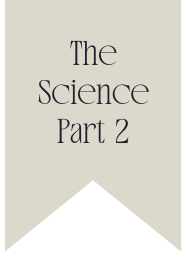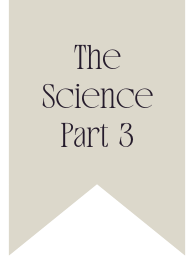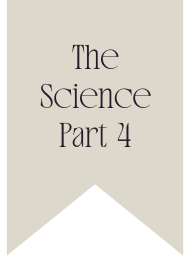
The Emerging Science Behind Somatic Work
What we now call somatic practice has ancient roots — ways of listening to the body, moving with it, breathing with it, and letting its quiet wisdom lead the way. Science is only beginning to catch up.
Early research — especially around approaches like Somatic Experiencing — shows promising results for healing trauma, easing chronic stress, and helping the nervous system return to a steadier rhythm. Much of what’s been studied so far looks at how this works: our ability to sense what’s happening inside (interoception), to move and inhabit our physical form with awareness (proprioception), and to calm the deeper layers of the nervous system from the bottom up.
The field is still young and evolving. “Somatic practice” is an umbrella for many methods — movement, touch, breath, ritual, awareness —
which makes the research beautifully diverse but sometimes hard to compare. Many studies are small or exploratory. More large, controlled trials will come with time.
Yet even at this early stage, the evidence is encouraging and aligns with what countless people feel in their own healing: the body remembers, and the body can lead us home.
Below you’ll find a curated collection of studies and reviews — a bridge between ancient knowing and modern inquiry, for those who love to see the data as well as feel the truth.
What would you like to study?
Choose an option to jump to that section.
Where Mind Meets Body
What we feel, think, and believe is never separate from the body that holds it. Science now confirms what wisdom traditions have long whispered — that our thoughts, emotions, and nervous system shape our physical health, and the body in turn shapes our inner life.
Research into the mind–body connection reveals how stress, perception, and emotional regulation influence immunity, inflammation, and healing — and how practices like mindfulness, breath, and movement can restore balance. The field keeps evolving, but the message is clear: mind and body are one living, responsive system.
Below you’ll find a curated selection of studies exploring this profound interplay — a bridge between ancient insight and modern evidence. {JUMP TO TOP}
-
A somato-cognitive action network alternates with effector regions in motor cortex - this is the full nerd out link for the “Mind-Body Connection is Built Into Brain, Study Suggests” article
Mind body medicine: a modern bio-psycho-social model forty-five years after Engel
Mind and body: how the health of the body impacts on neuropsychiatry
The Body Remembers
Long before research caught up, healers knew the body could hold and release what words cannot. Science is now beginning to map this wisdom — showing how breath, movement, touch, and felt awareness can calm the nervous system and help us heal from within.
Studies on practices like Somatic Experiencing reveal early but promising signs: relief from trauma and stress, greater resilience, and steadier emotional regulation. The field is young and still unfolding, yet the findings echo what so many have felt — when we return to the body, we find the way home.
Below you’ll find a curated selection of research — where ancient knowing meets modern discovery. {JUMP TO TOP}
The Mystery & Science of the Heart
Long before we could measure it, healers spoke of the heart as a source of wisdom, connection, and unseen influence. Modern science is beginning to trace those whispers in the language of heart rate variability (HRV), vagal tone, and psychophysiological coherence — showing that the rhythms of the heart shape how we regulate emotion, recover from stress, and feel safe in our own skin.
Research now confirms what many have always felt: breath, slow rhythmic movement, and emotional self-regulation can bring the heart into a more coherent, resonant state. This coherence is associated with improved nervous system balance, emotional steadiness, and even the ability to attune more deeply to others.
The study of interpersonal heart resonance — the way our physiology may subtly synchronize with those around us — is still in its infancy. Early findings hint at measurable heart-to-heart synchrony during connection, empathy, and shared states of calm. The evidence is promising but still emerging, and we need larger, well-controlled studies to fully understand these effects.
Below, you’ll find a curated collection of peer-reviewed studies exploring HRV, vagal tone, emotional regulation, and the first glimmers of how our hearts might resonate with one another. It’s a bridge between ancient knowing and modern inquiry — an invitation to honor both mystery and measurable biology. {JUMP TO TOP}
The Silent Echo Within
When we watch another move, reach, smile, or weep, something deep inside us stirs — a quiet echo that science now calls the mirror neuron system. These specialized brain cells fire not only when we act, but also when we witness the action in another, creating an inner simulation of what we see.
Emerging research suggests this system may help us learn through observation, attune to others’ emotions, and feel the subtle pull of empathy. While debate continues about exactly how it works, the evidence paints a compelling picture: we are wired for resonance, connection, and shared understanding at a neural level.
Below you’ll find a curated selection of peer-reviewed studies and reviews exploring mirror neurons — a bridge between the felt sense of human connection and the measurable language of neuroscience. {JUMP TO TOP}
-
Mirror neurons 30 years later: implications and applications
The role of shared neural activations, mirror neurons, and morality in empathy – A critical comment
The role of mirror neurons in observational motor learning: an integrative review
Exploring cardiac physiological synchrony and its implications for stress and anxiety
Threads of Connection Beyond Space & Time
Physicist Albert Einstein once called it “spooky action at a distance” — the mysterious way two particles can become entangled, their states linked no matter how far apart they travel. What one does, the other somehow knows, instantly.
Modern physics has confirmed this strange bond. Through elegant experiments and powerful mathematics, scientists have shown that entanglement is real: two systems can share a single, non-local quantum state, defying our everyday sense of separation. These findings have reshaped how we understand reality itself and opened doors to quantum communication, encryption, and computing.
What this does not mean (yet) is faster-than-light messaging or proven human telepathy. But it does remind us that the universe is more interconnected and mysterious than classical science once allowed.
Below is a curated selection of peer-reviewed research exploring quantum entanglement — a bridge between wonder and rigorous inquiry, for those who feel drawn to the subtle web that binds everything. {JUMP TO TOP}
-
Quantum entanglement: Principles and research progress in quantum information processing
Observation of quantum entanglement with top quarks at the ATLAS detector
Testing the Conjecture That Quantum Processes Create Conscious Experience
Research on the Correlation between Quantum Entanglement and Thinking Consciousness










